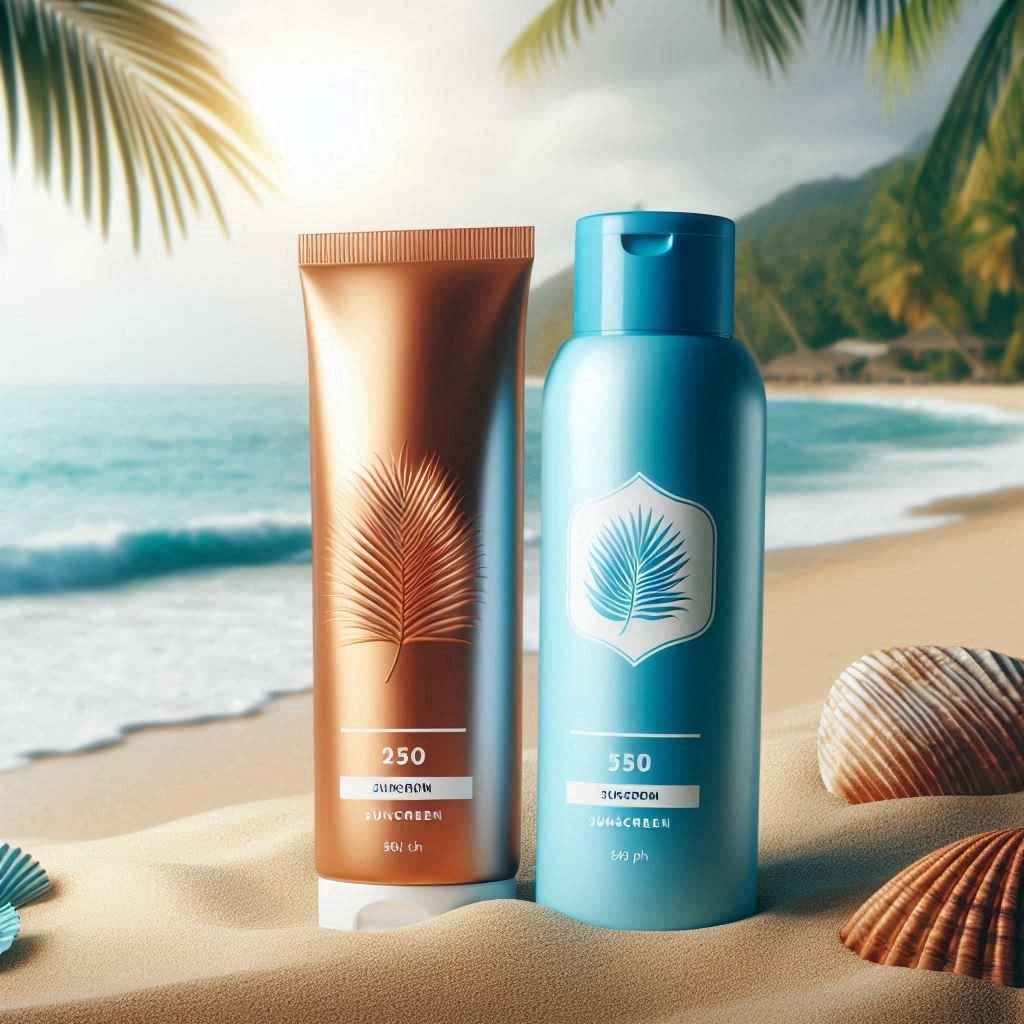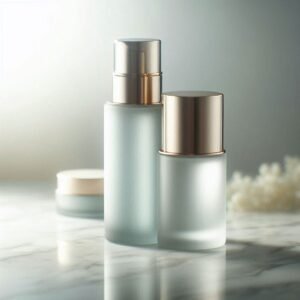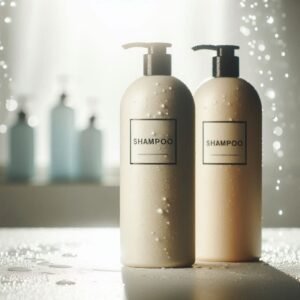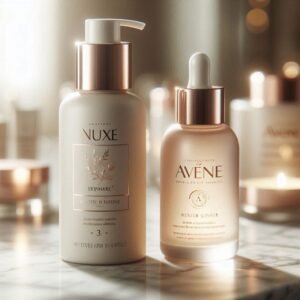Coppertone Vs Neutrogena 2024 – You’re on the hunt for the perfect sunscreen, and Coppertone and Neutrogena are two names that keep popping up. Both brands boast an impressive range of products, but how do you choose between them? You’ve got specific skin concerns and priorities, and you need a sunscreen that checks all the right boxes.
As you begin your search, you’re probably wondering: what sets these brands apart? What are their strengths and weaknesses? And, ultimately, which one is right for you? Let’s plunge into the details and explore what each brand has to offer.
A Quick Overview
- Coppertone and Neutrogena offer different product lines catering to various skin types and needs, with broad-spectrum sunscreens and moisturizers.
- Coppertone prioritizes chemical synergy for broad-spectrum protection, while Neutrogena focuses on natural preservatives and gentler ingredients for sensitive skin.
- Both brands provide suitable sun protection for normal skin, with Coppertone’s WaterBabies line and Neutrogena’s Sheer Zinc Dry-Touch Sunscreen suitable for sensitive skin.
- Pricing varies, with Coppertone offering more affordable options starting at $8 and Neutrogena offering premium alternatives ranging from $11 to $25.
- Customer reviews praise Coppertone’s effective sun protection and ease of application, while Neutrogena’s customers appreciate their lightweight, non-greasy formulas.
Brand History and Background

Since the 1940s, Coppertone and Neutrogena have been two of the most recognizable names in the sunscreen and skincare industries, with each brand boasting its own unique history and background that has shaped their products and philosophies.
Coppertone’s brand evolution has been marked by innovative products, such as the introduction of the first waterproof sunscreen in 1953.
Neutrogena, on the other hand, has achieved company milestones like being acquired by Johnson & Johnson in 1994, expanding its global reach.
Understanding the brand history and background of Coppertone and Neutrogena will give you a deeper appreciation for their products and values.
Product Lines and Offerings
As you explore the world of Coppertone and Neutrogena, you’ll discover that both brands boast impressive product lines and offerings.
Both Coppertone and Neutrogena offer a diverse range of products catering to various skin types and needs, from broad-spectrum sunscreens to moisturizers and skin care solutions.
Their brand portfolios are designed to meet your unique skin concerns, whether you’re looking for everyday protection, anti-aging solutions, or specialized care for sensitive skin.
You’ll find a product variety that suits your lifestyle, with options for face, body, and lip care.
From water-resistant lotions to luxurious moisturizers, both brands provide an extensive range of products to help you achieve healthy, glowing skin.
SPF Levels and Protection

When it comes to SPF levels and protection, you’re likely wondering what sets Coppertone and Neutrogena apart.
You’ll want to ponder the level of broad spectrum defense each brand offers, as well as their effectiveness against UVA and UVB rays.
Additionally, you’ll need to think about how long each sunscreen lasts before reapplication is necessary, and how well they hold up to water and sweat.
Broad Spectrum Defense
You’re likely familiar with the importance of broad spectrum defense in sunscreen, but do you know how Coppertone and Neutrogena stack up in terms of SPF levels and protection?
Let’s debunk some common sunscreen myths and explore the defense mechanisms of these two popular brands.
When it comes to broad spectrum defense, SPF levels are crucial: both Coppertone and Neutrogena offer a range of SPF options, from 15 to 100+, providing varying levels of protection against UVB rays.
Defense mechanisms are also important: both brands use a combination of chemical and physical active ingredients to protect your skin from UVA and UVB rays.
Water-resistance is another key factor: both Coppertone and Neutrogena offer water-resistant formulas, ensuring your skin stays protected even when you’re swimming or sweating.
UVA and UVB
Dig into the world of UVA and UVB rays, and you’ll find that SPF levels play a critical role in determining the level of protection your sunscreen provides.
You’re likely familiar with SPF, but do you know what it really means? SPF measures a sunscreen’s ability to protect against UVB rays, which are the primary cause of sunburn.
UVA rays, on the other hand, penetrate deeper into the skin, causing premature aging and skin damage.
When choosing a sunscreen, look for broad-spectrum protection, which shields against both UVA and UVB rays.
Advanced sunscreen technologies, like Coppertone’s and Neutrogena’s, offer enhanced protection against these harmful UV rays.
Sunscreen Durability
As you evaluate sunscreens, understanding the SPF levels and how they impact protection is vital to making an informed decision. SPF (Sun Protection Factor) measures a sunscreen’s ability to filter out UVB rays, which cause sunburn.
- Low SPF (15-30): Suitable for daily exposure, providing minimal to moderate protection.
- Medium SPF (30-50): Offers long-lasting protection for extended outdoor activities.
- High SPF (50+): Ideal for intense outdoor activities or sensitive skin, providing maximum protection.
When choosing a sunscreen, consider your skin type, lifestyle, and outdoor activities. Coppertone and Neutrogena offer a range of SPF levels, so selecting the right one is imperative to your needs.
Ingredients and Formulations
When comparing Coppertone and Neutrogena, it is vital to examine the ingredients and formulations that set these two popular sunscreen brands apart.
You’ll notice that Coppertone’s formulas often prioritize chemical synergy, combining active ingredients to provide broad-spectrum protection. This results in a more exhaustive defense against UVA and UVB rays.
On the other hand, Neutrogena tends to focus on natural preservatives, opting for plant-derived ingredients that are gentler on skin.
While both approaches have their benefits, it is imperative to weigh your personal skin type and preferences when choosing between these two brands.
Skin Type and Condition Suitability
When it comes to choosing between Coppertone and Neutrogena, you need to weigh your skin type and condition.
If you have normal skin, you’ll want to look for a sunscreen that won’t clog your pores or irritate your skin.
But if you have sensitive skin, you’ll need a formula that’s gentle and won’t trigger any reactions.
Normal Skin Concerns
You can rely on both Coppertone and Neutrogena to provide suitable sun protection for normal skin, which is typically characterized by a balance of oil and moisture.
As someone with normal skin, you’re likely focused on maintaining your skin’s natural balance. For you, sun protection is essential to prevent premature aging and skin damage.
To achieve your skin goals, incorporate these habits into your daily routines:
Apply sunscreen daily: Use a broad-spectrum sunscreen with at least SPF 30, even on cloudy days.
Moisturize regularly: Keep your skin hydrated with a lightweight, oil-free moisturizer.
Exfoliate weekly: Gently remove dead skin cells to maintain a smooth, radiant complexion.
Sensitive Skin Needs
If you have sensitive skin, you’ll want to choose a sunscreen that’s gentle and non-irritating, as harsh chemicals can exacerbate skin conditions like rosacea, eczema, or acne.
You’re likely no stranger to skin reactions, so crucially, you need to opt for a formula that’s designed with sensitive skin in mind.
Both Coppertone and Neutrogena offer gentle formulas that cater to sensitive skin needs. Coppertone’s WaterBabies line is fragrance-free and hypoallergenic, making it an excellent choice for sensitive skin.
Neutrogena’s Sheer Zinc Dry-Touch Sunscreen is also a great option, as it’s free of harsh chemicals and features a gentle, non-comedogenic formula.
When it comes to sensitive skin, vitally, finding a sunscreen that works with your skin, not against it, is paramount.
Price Points and Value
By comparing the prices of Coppertone and Neutrogena sunscreens, it becomes clear that both brands offer a range of options to fit different budgets and preferences.
As you explore their product lines, you’ll find that Coppertone tends to be more affordable, with prices starting at around $8 for a basic sunscreen. Neutrogena, on the other hand, offers more premium alternatives, with prices ranging from $11 to $25 for their high-end products.
Some key price points to weigh:
Budget-friendly options: Coppertone’s WaterBabies line starts at $8, while Neutrogena’s Sheer Zinc Dry-Touch Sunscreen costs around $11.
Mid-range options: Coppertone’s Sport line costs around $12, while Neutrogena’s Wet Skin Kids Sunscreen Spray costs around $15.
Premium alternatives: Neutrogena’s Hydro Boost Water Gel Sunscreen costs around $25, offering advanced hydration and sun protection.
Ultimately, the choice between Coppertone and Neutrogena comes down to your budget and what you’re looking for in a sunscreen.
Customer Reviews and Ratings
Three out of four Coppertone customers recommend the brand’s sunscreens, citing effective sun protection and ease of application as top benefits.
You’ll find similar sentiments when exploring Neutrogena’s customer reviews, with many praising their lightweight, non-greasy formulas.
But what about review authenticity? Vital to examine the source and look for verified purchases to validate the feedback is sincere.
Rating reliability is also pivotal, as it gives you a more accurate representation of a product’s performance.
When reading reviews, pay attention to the overall rating trend and the number of reviews.
This will help you make a more informed decision about which sunscreen is right for you.
Water Resistance and Durability
As you’re choosing between Coppertone and Neutrogena sunscreens, weighing their water resistance and durability is crucial, especially if you plan to use them during water activities or outdoor adventures. You want to guarantee your sunscreen stays effective even when you’re sweating or swimming.
Some key factors to ponder:
Water testing: Look for sunscreens that have undergone rigorous water testing, such as the 80-minute water immersion test, to guarantee they remain effective after swimming or sweating.
Longevity claims: Check the product’s longevity claims, such as ‘water-resistant for 80 minutes‘ or ‘long-lasting protection.’
Durability in use: Ponder how well the sunscreen stays on your skin during extended wear, and whether it requires frequent reapplication.
Sunscreen Types and Options
When selecting between Coppertone and Neutrogena sunscreens, you’ll find a range of options to suit your specific skin type and preferences, from lotions and sprays to sticks and gels.
Whether you’re looking for a lightweight, non-greasy formula for daily use or a water-resistant option for your summer routines, there’s a sunscreen to fit your needs.
If you want to achieve a sun-kissed glow without the damage, you might opt for a moisturizing sunscreen with antioxidants.
Or, if you have sensitive skin, you can choose a fragrance-free, hypoallergenic option.
With so many types and options available, you’re sure to find a sunscreen that not only protects your skin but also fits seamlessly into your daily routine.
Eco-Friendliness and Sustainability
When you’re shopping for sunscreen, you’re not just thinking about your skin – you’re also considering the planet.
You want to choose a brand that’s committed to using green ingredients, protecting coral reefs, and reducing packaging waste.
Let’s see how Coppertone and Neutrogena stack up when it comes to eco-friendliness and sustainability.
Green Ingredients Matter
You’re likely to prioritize eco-friendliness and sustainability when choosing a sunscreen, which is why examining the green ingredients in Coppertone and Neutrogena products is crucial. As an eco-conscious consumer, you want to guarantee that your natural priorities align with the ingredients used in your sunscreen.
Natural ingredients like aloe vera, green tea, and coconut oil are gentle on your skin and the environment.
Opt for sunscreens with recyclable or biodegradable packaging to reduce waste and minimize environmental impact.
Check for certifications like the Leaping Bunny Program or PETA’s ‘Cruelty-Free‘ logo, which guarantee that the products are free from animal testing and cruelty.
Reef-Safe Formulations Importance
About 4,000 to 6,000 tons of chemical sunscreen ingredients enter coral reefs every year, making reef-safe formulations a critical aspect of eco-friendly and sustainable sunscreen choices.
As you weigh your options between Coppertone and Neutrogena, consider the impact of your sunscreen on the ocean’s delicate ecosystem.
Reef-safe formulations are a key factor in ocean conservation and environmental stewardship.
By choosing sunscreens that avoid harmful chemicals like oxybenzone and octinoxate, you’re helping to protect coral reefs and the marine life that call them home.
You’re part of a larger community that cares about the health of our planet, and your sunscreen choices can make a real difference.
Packaging Waste Reduction
As you consider the environmental impact of your sunscreen choice, reducing packaging waste is another key aspect of eco-friendliness and sustainability that sets Coppertone and Neutrogena apart.
When it comes to minimizing waste, both brands have made efforts to appeal to eco-conscious consumers.
Neutrogena has introduced refillable sunscreen containers, reducing plastic waste and encouraging customers to reuse and recycle.
Coppertone uses recyclable and biodegradable materials in their packaging, minimizing their carbon footprint.
Both brands have pledged to achieve zero-waste goals, with Neutrogena aiming for 100% recyclable or reusable packaging by 2025 and Coppertone committed to reducing waste by 50% by 2025.
Overall Performance and Verdict
After considering the features, benefits, and drawbacks of both Coppertone and Neutrogena, it’s clear that each brand has its strengths and weaknesses, making the choice between them largely dependent on individual skin types and sun protection needs.
As you weigh your options, think about your daily routine and how you plan to incorporate sun protection into it.
If you’re looking for a reliable companion for your summer essentials, Coppertone’s broad-spectrum protection and water-resistance might be the way to go.
On the other hand, if you prioritize gentle, non-greasy formulas and eco-friendly packaging, Neutrogena could be the better fit.
Ultimately, the decision comes down to your unique skin concerns and sun protection priorities.
Frequently Asked Questions
Can I Use Coppertone or Neutrogena Sunscreen on My Tattoos?
When it comes to protecting your tattoos, you’re right to wonder if Coppertone or Neutrogena sunscreen is safe to use. You’ll want to avoid tattoo ink fading and skin tone changes, so choose a broad-spectrum sunscreen with SPF 30 or higher.
Can I Use Coppertone or Neutrogena Sunscreen on My Face Daily?
You can use Coppertone or Neutrogena sunscreen on your face daily, but guarantee you choose a lightweight, oil-free option for daily moisturizing and facial protection, as heavy products may clog pores or irritate sensitive skin.
Do Coppertone or Neutrogena Sunscreens Expire or Go Bad?
You’re smart to wonder if your sunscreen expires! Yes, sunscreens do have a shelf life and expiration dates. Typically, they last 2-3 years unopened, but check the packaging for specific dates to confirm you’re protected.
Can I Use Coppertone or Neutrogena Sunscreen on My Baby or Toddler?
When it comes to using sunscreen on your little ones, you’ll want to choose a gentle, fragrance-free option suitable for baby skin types and toddler skin conditions, like eczema or sensitive skin.
Are Coppertone or Neutrogena Sunscreens Suitable for Sensitive Scalps?
You’re wise to wonder if Coppertone or Neutrogena sunscreens are suitable for sensitive scalps. For those with scalp conditions or sensitive skin types, look for gentle, fragrance-free formulas that won’t irritate or exacerbate existing issues.
Conclusion
You’ve weighed the pros and cons of Coppertone and Neutrogena, two sunscreen and skincare heavyweights.
Both offer a range of products catering to different skin types and needs.
Coppertone excels in water-resistant sunscreens, while Neutrogena shines with its diverse moisturizing options.
Consider your skin concerns and priorities to make an informed decision.
If you need high SPF and water resistance, Coppertone might be the better choice.
For moisturizing benefits and a broader product range, Neutrogena is worth exploring.




